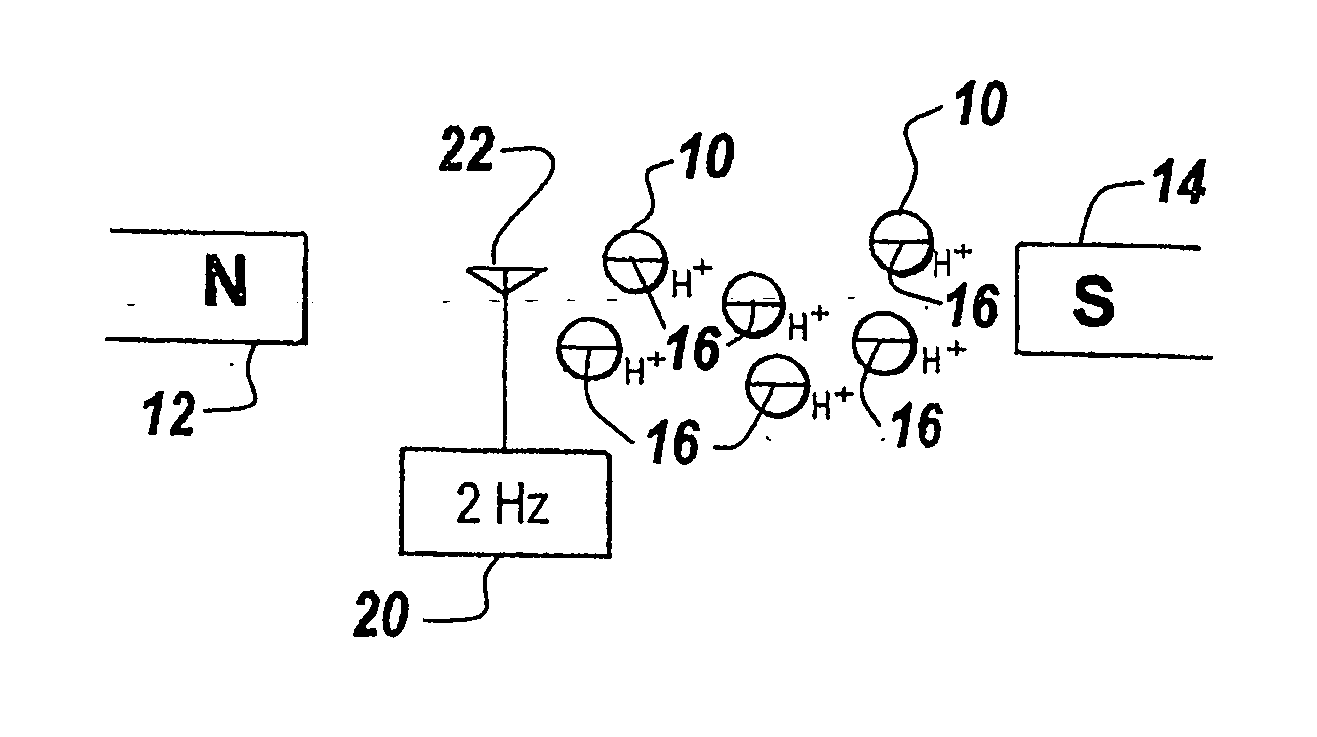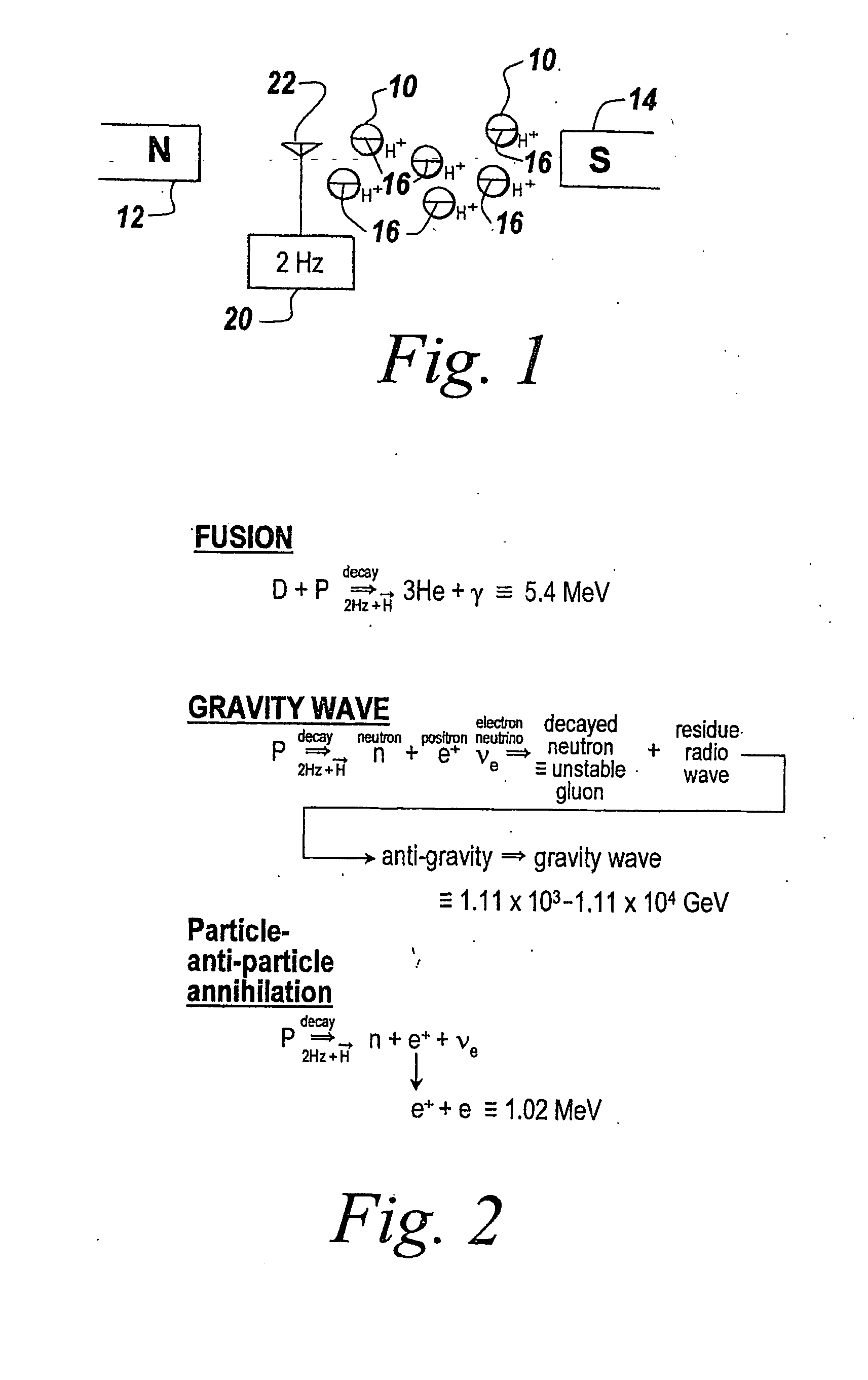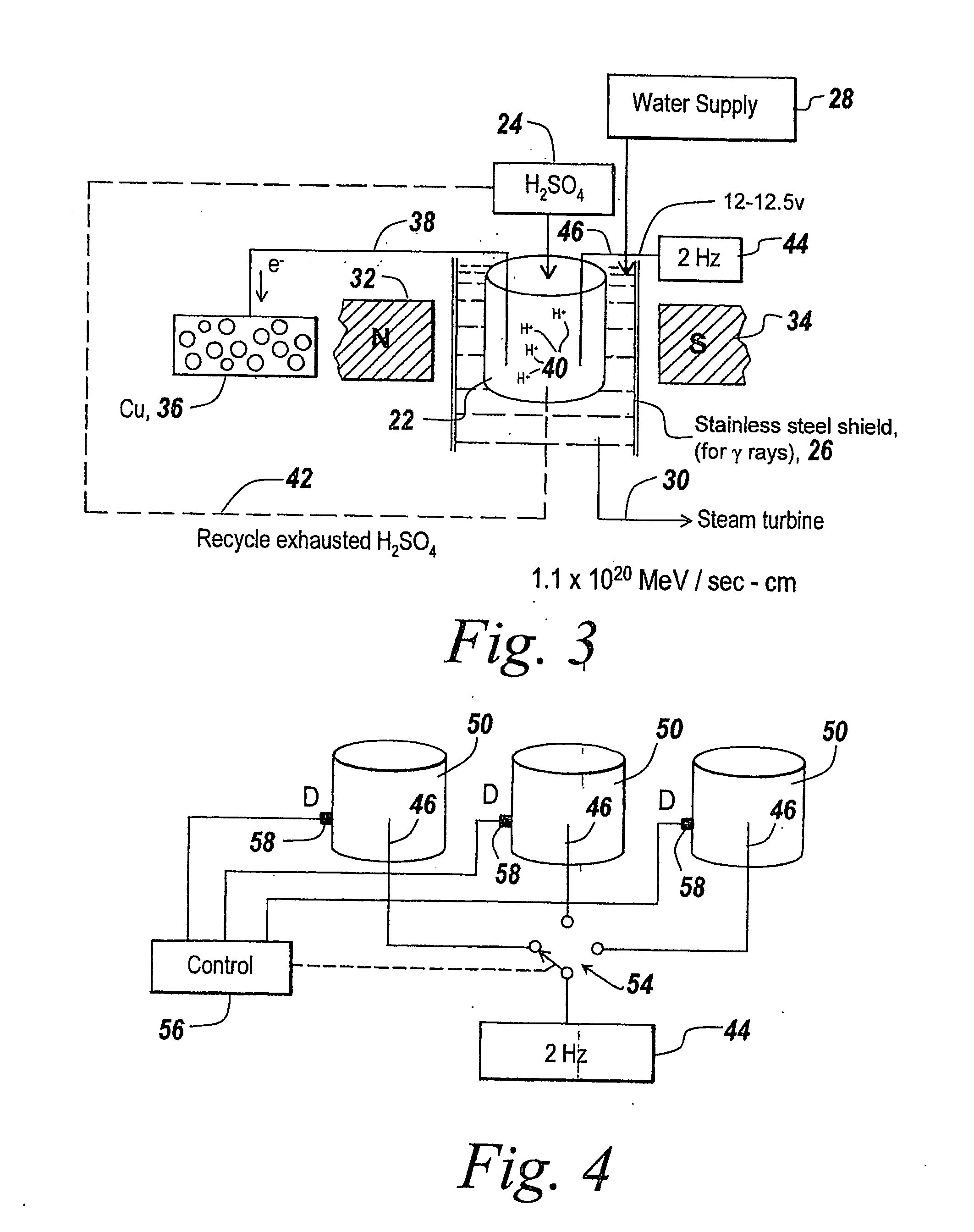Method and apparatus for the production of energy
a technology of energy production and nuclei, applied in nuclear reactors, nuclear engineering, greenhouse gas reduction, etc., can solve the problems of inability to achieve proton decay, inability to adequately observe the fundamental characteristic of mass, and inability to provide the required temperatures on earth to induce proton decay, etc., to achieve easy incorporation, eliminate the need for fossil fuels, and high efficiency
- Summary
- Abstract
- Description
- Claims
- Application Information
AI Technical Summary
Benefits of technology
Problems solved by technology
Method used
Image
Examples
Embodiment Construction
[0039] Referring now to FIG. 1, the ability to decay protons at room temperature in seconds as opposed to 1035 years is accomplished by placing protons 10 between the poles 12 and 14 of a magnet that orients each of the protons so that they are aligned as illustrated by lines 16 all in one direction along the magnetic lines of force between the magnetic poles. A 2 Hz radio wave is generated by a generator 20 which radiates the 2 Hz signal via an antenna 22, which in one embodiment is simply a copper wire.
[0040] As mentioned hereinbefore, it has been found that the 2 Hz radio wave promotes decay in under 360 seconds as opposed to 1035 years. The result of the proton decay as illustrated in FIG. 2 is to provide the release of energy in three forms: fusion, a gravity wave and particle-antiparticle annihilation.
[0041] As can be seen, through the application of the repeated 2 Hz signal and the magnetic field, when a proton is decayed in the presence of deuterium a fusion process ensues...
PUM
 Login to View More
Login to View More Abstract
Description
Claims
Application Information
 Login to View More
Login to View More - R&D
- Intellectual Property
- Life Sciences
- Materials
- Tech Scout
- Unparalleled Data Quality
- Higher Quality Content
- 60% Fewer Hallucinations
Browse by: Latest US Patents, China's latest patents, Technical Efficacy Thesaurus, Application Domain, Technology Topic, Popular Technical Reports.
© 2025 PatSnap. All rights reserved.Legal|Privacy policy|Modern Slavery Act Transparency Statement|Sitemap|About US| Contact US: help@patsnap.com



